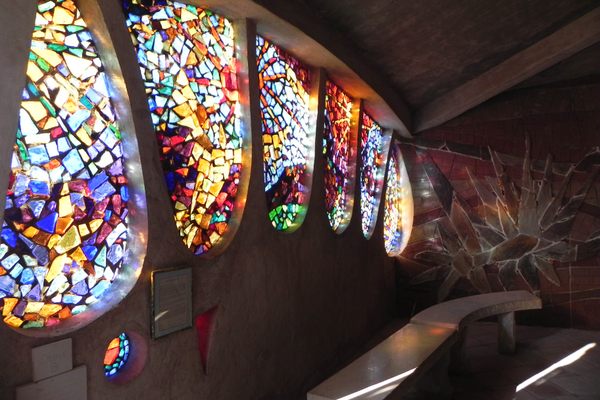The Grave of Albert Camus
The Nobel-Prize-winning author of The Stranger is buried beneath a simple gravestone in a sleepy French village.
In a remote cemetery on the outskirts of the quiet village of Lourmarin, Provence, is the final resting place of author Albert Camus.
Nobel prize winning author, one-time member of the French Resistance during World War II, expert goalkeeper, and one of the principal leaders of the Absurdist movement, one of the greatest French writers and philosophers of the 20th century is best remembered for his landmark works, The Stranger, The Plague, and The Fall, but his gravestone is small and virtually unknown.
Born in Algeria in 1913, Camus, died in a car accident in the French village of Villeblevin in 1960, at the age of 46. Camus had made his home in Lourmarin just two years earlier, entranced with the picturesque Provence town. Located in the Luberon mountains north of Aix-en-Provence, mountains which reminded Camus of his native Algeria, he bought a house in the sleepy town with the prize money from the Nobel Prize, on the rue de l’Eglise, amongst what he described as the “solemn and austere landscape despite its bewildering beauty.” Camus famously said that, “whatever I know about morality, I’ve learnt on the football pitch and the theatre stage,” and Camus became deeply involved with the Lourmarin football team, who play still today on a simple field overlooked by the town’s chateau.
In 2009, President Sarkozy initiated controversial plans to have Camus exhumed and reinterred at the Pantheon in Paris, the last resting place of such illustrious French names as Victor Hugo, Jean-Jacques Rousseau, and Voltaire. But the plans failed due to opposition from Camus’s son.
Today, life in the sleepy village of Lourmarin remains largely unchanged from Camus’ time there. Despite his stature in French culture, Camus’ grave is a humble, small stone affair, simply carved, set into the ground, and largely overgrown with grass and rosemary. He is buried next to his wife, Francine, in the town he so loved, and where his coffin was carried by the players of the village football club.


















Follow us on Twitter to get the latest on the world's hidden wonders.
Like us on Facebook to get the latest on the world's hidden wonders.
Follow us on Twitter Like us on Facebook